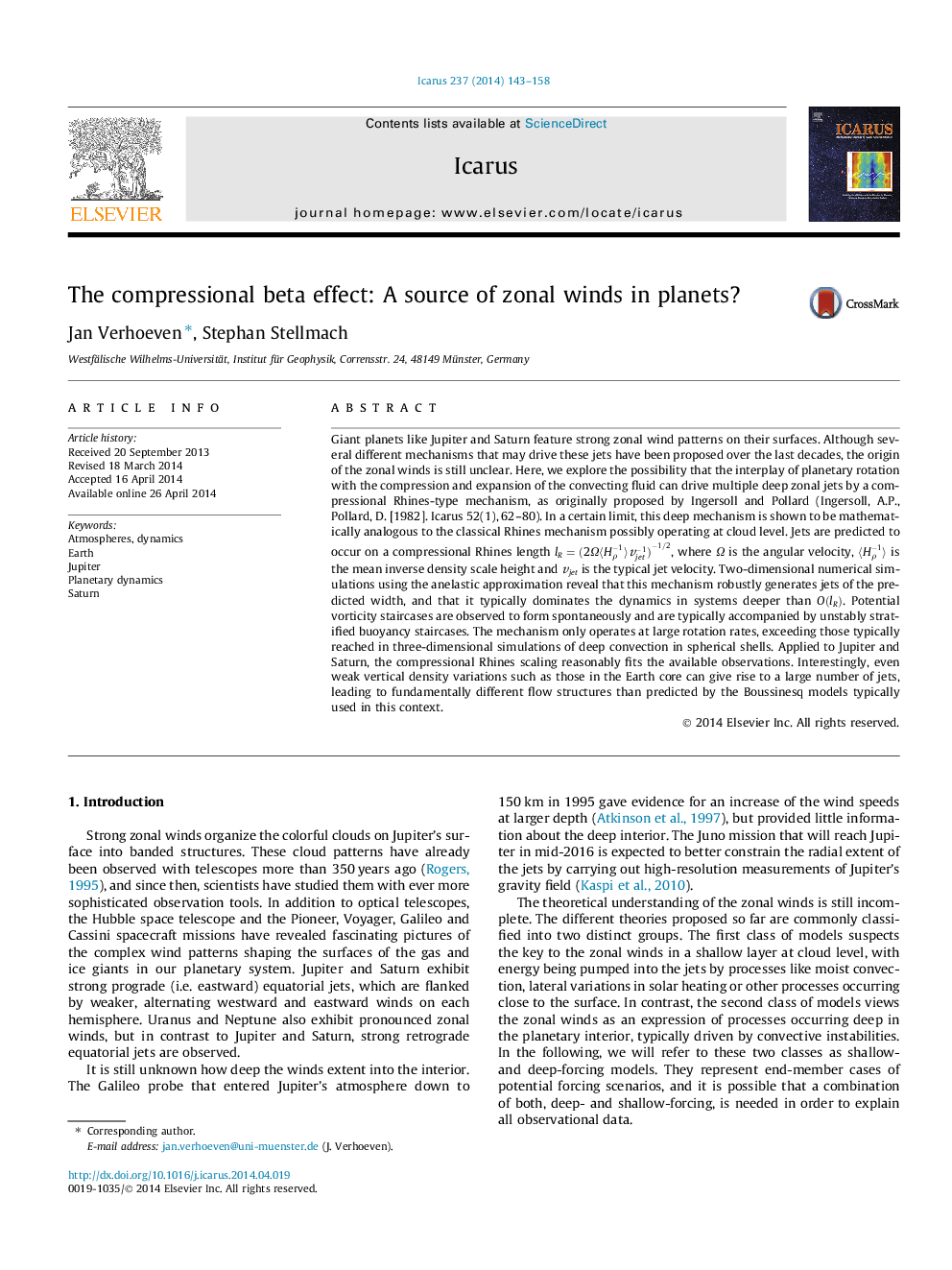| کد مقاله | کد نشریه | سال انتشار | مقاله انگلیسی | نسخه تمام متن |
|---|---|---|---|---|
| 8138064 | 1523553 | 2014 | 16 صفحه PDF | دانلود رایگان |
عنوان انگلیسی مقاله ISI
The compressional beta effect: A source of zonal winds in planets?
ترجمه فارسی عنوان
اثر بتا فشرده: منبع بادهای زلال در سیارات؟
دانلود مقاله + سفارش ترجمه
دانلود مقاله ISI انگلیسی
رایگان برای ایرانیان
کلمات کلیدی
محدوده، دینامیک، زمین، سیاره مشتری، دینامیک سیاره ای، زحل،
موضوعات مرتبط
مهندسی و علوم پایه
علوم زمین و سیارات
علوم فضا و نجوم
چکیده انگلیسی
Giant planets like Jupiter and Saturn feature strong zonal wind patterns on their surfaces. Although several different mechanisms that may drive these jets have been proposed over the last decades, the origin of the zonal winds is still unclear. Here, we explore the possibility that the interplay of planetary rotation with the compression and expansion of the convecting fluid can drive multiple deep zonal jets by a compressional Rhines-type mechanism, as originally proposed by Ingersoll and Pollard (Ingersoll, A.P., Pollard, D. [1982]. Icarus 52(1), 62-80). In a certain limit, this deep mechanism is shown to be mathematically analogous to the classical Rhines mechanism possibly operating at cloud level. Jets are predicted to occur on a compressional Rhines length lR=(2ΩãHÏ-1ãvjet-1)-1/2, where Ω is the angular velocity, ãHÏ-1ã is the mean inverse density scale height and vjet is the typical jet velocity. Two-dimensional numerical simulations using the anelastic approximation reveal that this mechanism robustly generates jets of the predicted width, and that it typically dominates the dynamics in systems deeper than O(lR). Potential vorticity staircases are observed to form spontaneously and are typically accompanied by unstably stratified buoyancy staircases. The mechanism only operates at large rotation rates, exceeding those typically reached in three-dimensional simulations of deep convection in spherical shells. Applied to Jupiter and Saturn, the compressional Rhines scaling reasonably fits the available observations. Interestingly, even weak vertical density variations such as those in the Earth core can give rise to a large number of jets, leading to fundamentally different flow structures than predicted by the Boussinesq models typically used in this context.
ناشر
Database: Elsevier - ScienceDirect (ساینس دایرکت)
Journal: Icarus - Volume 237, 15 July 2014, Pages 143-158
Journal: Icarus - Volume 237, 15 July 2014, Pages 143-158
نویسندگان
Jan Verhoeven, Stephan Stellmach,
